Cossacks against the Hunghuz: the ethnic struggle in the Ussuri region
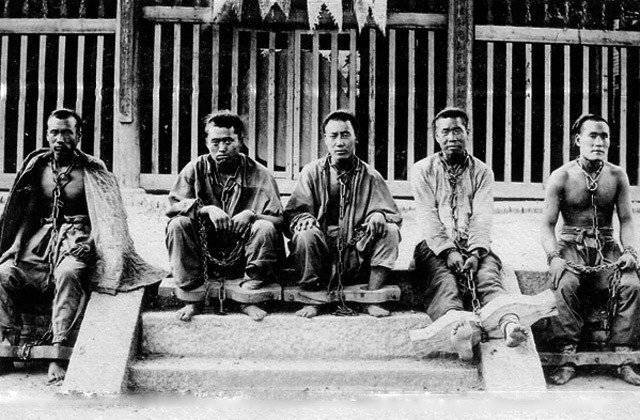
The leadership of the Russian Empire at the end of the 19th century tolerated Chinese expansion in the Far East; Cossacks fought off aggressors
The Russian Planet continues the cycle of stories by historian Nikolai Lysenko about the conquest of the Far East by the Cossacks. Previously published were the Albazinsky Siege: Cossacks Against the Chinese and Cossack Thermopylae: The Battle of Amur.
Despite the obvious strategic importance of the "Cossack factor" in the success of the colonialist efforts of Russia in the Far East, the Cossack methods of colonization themselves, a kind of "Cossack ethnic policy" in this region, sometimes came into harsh and sometimes irreconcilable contradiction with the ethno-political views of titled royal emissaries in Eastern Siberia and Primorye.
"Chinese territories", in which there were no Chinese
After the signing of the Muscovy’s ambassador, Fyodor Golovin, in the 1689 year, the infamous Nerchinsky Treaty with China in Chin, Russia lost the lands already conquered and partially mastered by the Cossacks along the Amur for almost 200. However, this loss was not much grieved in Petersburg: in the middle of the 19th century, the lands of the Amur region, and even more of Primorye, were for an absolutely overwhelming majority of empire administrators something like “possessions on the Limpopo River”. Absolute Eurocentricism, and even more so - Anglocentrism, - saturated the pores of consciousness of the inhabitants of the power corridors of St. Petersburg, quite clearly answered the question about the need for the Russians to return to the “high bank of the Amur” again with an surprised, very sincere question - “why?”.
Therefore, the efforts of Captain GI. Nevelsky, who explored the lower reaches of the Amur River in 1849 and proved the navigability (and hence the solid economic prospects) of this river, caused clear irritation at first in St. Petersburg. The “Eurocentrists” in the government could not believe that the Amur Liman and the whole of Lower Amur are navigable (for many years the Marine Board of St. Petersburg proved the opposite).
The special same irritation caused Nevelsky assertion that on the Amur almost was not Chinese. This statement of the initiative of the Russian captain was taken loosely not only in the Maritime Ministry of the Empire, but also in the Foreign Ministry. Still would! After all, it turned out that the perennial recommendations of the officials of this foreign ministry, who clearly instructed all Russian emissaries in Eastern Siberia - “not to irritate the Chinese with any invasion of Chinese territories across the Amur” - turned out to be frank profanity against Amur lands, which cast doubt on professional competence Ministry of Foreign Affairs.
The process of methodical defamation of Nevelskoy stopped only after the personal intervention of the influential governor-general of Eastern Siberia N.N. Muravyev-Amur. At a personal audience with Emperor Nicholas I, Count Muravyov was able to prove the economic viability of joining the lands of the Far East to the empire. Subsequently N.N. Muravyov-Amursky, having received state authority to negotiate with China in Ching, was able to conclude with them a new Aigun agreement, which assigned Russia the left bank of the middle and lower Amur as far as the Sea of Okhotsk. The monstrous misunderstanding (or crime) of the Nerchinsky Treaty, albeit in 200 years, was finally overcome.
Cossack "legionnaires" in the Ussuri region
Armed Cossack villages, inhabited by people from the Don, Kuban, Terek, Urals and Transbaikalia, first appeared on Ussuri in 1858 year. The idea of creating them copied, in essence, the ancient experience of the military camps of the Rhine and Danube legions of the Roman Empire. The Cossacks, who settled in Amur and Ussuri, sought the same maximum militancy of life and an organic combination of combat and agricultural craft. The internal relations of the Cossacks, like legionnaires from Zareinian and Trans-Danube settlements, were distinguished by a deliberate social simplicity with simultaneous rigorous military subordination. It was these factors that ensured the exceptional effectiveness of Cossack methods of establishing ethnopolitical dominance in the Ussuri region, outside of which the soon-to-be-launched war with the Chinese Manzi would very likely be Russia in the end.
The presence of Cossack settlements in Ussuri allowed an outstanding diplomat, Major General N.P. Ignatiev to conclude 2 in November 1860, a thorough Beijing treaty, which finally separates the possessions of Russia and the Qing Empire in the Ussuri region. After its signing, Russia was able to clearly delimit its possessions in the Ussuri region (along the Ussuri River and Lake Khanka) from the Chinese possessions in Manchuria.
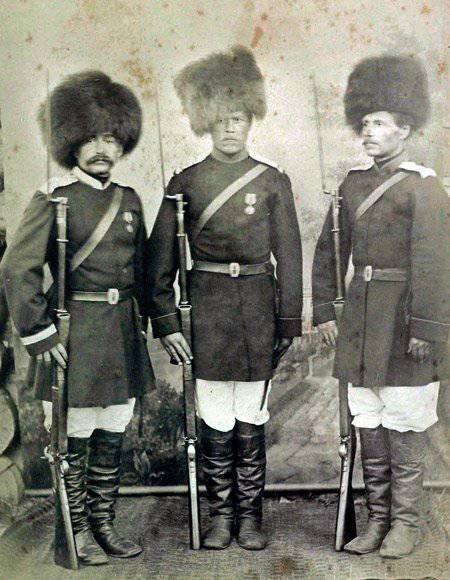
In fact, to separate the Ussuri region from the Chinese Manchuria at that time (and today, perhaps, too) was absolutely necessary from a strategic point of view. The lands “beyond Ussuri” before the arrival of Cossack and Great Russian settlers to them were considered by the Chinese as the wild, deaf periphery of the Qing Empire. Here went the familyless Chinese buyers of furs, red deer and ginseng root horns, and scattered Chinese criminals ran here. There were practically no permanent Chinese settlements here, and they were not even attempted to create them.
The only permanent population of the Ussuri region in the middle of the 19th century was the aboriginal tribes of hunters and fishermen — the Nivkhs, the Udege, the Orochons, and others — their total number did not exceed 12 — 18 thousand people. Cossack nature management, based on driven livestock and arable farming, practically did not come into conflict with the age-old foundations of the Amur aboriginal economy.
In the middle of the 19th century, the neighboring (through the Ussuri and Tumangan rivers) Manchuria showed a completely different ethnosocial picture. Extensive, moderately mountainous, extremely rich in natural resources, the country, Manchuria, by the middle of the XIX century, remained only Manchu by name. During this period, there was already a very dense population - more than 12 million people, of whom ethnic Manchus barely made up one million.
The Chinese, who feel their strength and are not going to stop there, reacted extremely hostile to the arrival of the Cossacks and the Russians in the Ussuriysk Territory. The main tool of the Chinese military onslaught against the ethnic Russian Primorye began hunghutz.
Blackheads "redbeard"
Well-organized and well-armed Hunghuz gangs, the size of which sometimes reached the number of full-fledged army divisions that terrorized the Russian Ussuriisk region for more than half a century, consisted almost exclusively of Chinese Han.
The appearance of the ethnic Han: the almost complete absence of a beard and burning black hair paradoxically contradicted the self-name of a professional Chinese robber, hunhuz. The word “hunghuz”, according to the authoritative opinion of the sinologists, is a distorted Chinese phrase “Hong huzi”, which, in the semantic translation into Russian, means “possessor of the red beard”. How did the phrase so inappropriate to the phenotypic appearance of the Chinese become so popular in the ethnic Chinese environment that it eventually became a kind of predatory self-name?
Over the resolution of this issue, many researchers and writers puzzled over the topic of hunkhusnichestvo in the Far East: N.М. Przhevalsky, N.G. Garin-Mikhailovsky, K.S. Badigin, I.P. Yuvachev and others. Modern researcher D.V. Ershov, summing up this chronologically very long discussion, was forced to state the complete fiasco of all previously announced versions of the "Hunghus paradox". The historian himself, reflecting in a strange anti-Kazak style, unexpectedly leaned toward the idea that it was said that the red-bearded Cossacks "under the leadership of Erofei Khabarov and Onufriy Stepanov," who had passed by fire and sword across the Amur, in the middle of the 17th century "taught" timid and the law-abiding Chinese were hunkhuznichestvu and gave them a gift of their "red-bearded" title. And how could it be otherwise, if, in the opinion of D.V. Yershov, in his bloodthirsty treatment of the local population, “did the Cossacks differ from the Spanish conquistadors, except by their special recklessness and complete absence of religious fanaticism”?
I believe that any modern Chinese revanchist who sincerely names Vladivostok as Haishenvey and Blagoveshchensk Haylanbao will be very grateful to Dmitry Ershov for an exhaustive and knowledge-intensive explanation of the true meaning of the term "hunghuz."
However, in historical In retrospect, such assessments were quite often put forward, oddly enough, by their Russian origin as “popularizers” of the Far East. For example, the writer Gavriil Murov in the book “People and Morals of the Far East (Travel Diary)”, published in Tomsk in 1901, explains in detail the paradox of the term “red-bearded” among absolutely black-headed Chinese. “The Chinese could not have,” writes Murov, m of this external sign. The peoples of the Mongolian race, neighboring with China, also. The exception is only our Russians, different adventurers and easy-earners ... for many decades raging [sic! - NL] on the vast border of China, robbing him of [sic! - NL] region after region and destroying [sic! - NL] hundreds of his sons. During these years, the expression "red beard" in the annex to the "dashing" foreigner becomes common, and then the Chinese begin to apply not only to foreigners, but also to their own, Chinese robbers. "
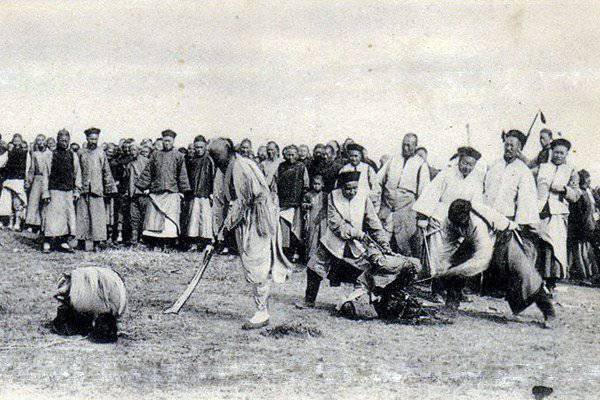
Convincingly demonstrated by Murov, the "complex of non-commissioned officer widow", which, as you know, "shewn herself," is really puzzling. Much less than any specialist in the ancient history of Central Asia, apparently, the unsolvability of the supposedly “Khunkhuz paradox” itself will puzzle.
The term "hunghuz" has a very respectable antiquity and, in any case, can in no way be related either to Russians or Cossacks, or to the hypothetical acts of the latter in the XVII century in the style of "Spanish conquistadors." This term originated in a purely Chinese environment and reflected the forced worship of the ancient Chinese in front of the strength and power of the northern “hu” - the tribes of the Scythian-Dingla group, who wandered in the steppes north of the Great Wall of China.
Ancient Chinese folklore is filled with legends about the fierce struggle of the “black-haired” ancestors of the Chinese with the “red-haired devils”, which is a spiritual reflection of the centuries-old efforts of the agricultural race of the Chinese to oust the nomadic pastoralists from the lands north of the Huanghe River. In some periods of ancient Chinese history, the "red-haired devils" convincingly gained the upper hand in the military-political struggle against the "black-haired" and even left their obvious genetic mark in their ruling dynasties.
For example, according to the first Chinese dynastic chronicle "Shi Ji", written by the historian Sima Qian, the brilliant Gao-huang-di, the ancestor of the Han dynasty, "had an aquiline nose, broad forehead, was simple and endowed with extensive consideration." Gao-huang-di also had a magnificent beard and sideburns — physiognomic signs inconceivable in ethnically pure Chinese in more recent times.
In the ancient chronicle of the Three Kingdoms (San-go Chi), many Chinese politicians who had the Scythian Dinling genome are described in exactly the same way, and one of them, the red-bearded bogatyr Sun Quan, even bore the nickname “blue-eyed boy”. The famous Russian ethnologist and traveler G.Е. Grumm-Grzhimailo notes that on the northeastern border of China, in Manchuria, as early as the 10th century AD wandered blond and blue-eyed tribe syanbi (Khitan), which stood out for its intrepid steadfastness in battles. As a result of genetic mixing with this tribe, Grumm-Grzhimailo stresses, even among the Manchus, even at the end of the 18th century, individuals with light blue eyes, a straight nose, reddish hair and a thick beard could be found.
Thus, the term “hunghuz” appeared in the Chinese folk environment not at all as a reminder of the former atrocities of the Cossacks, but as a tribute to the worship of outstanding military (mostly legendary, of course) qualities of ancient Chinese commanders who had characteristic Scythian Dyne physiological features.
Therefore, taking into account the Chinese mentality, the semantic translation of the term “hunghuz” does not boil down to the banal - “professional robber” (as the Russian historian FF Busse suggested), but rather closer to the concepts of “successful”, “luck catcher of military luck”, "Folk hero." The eloquent detail convinces of the truth of the latter meaning: in official Chinese documents of the 19th — early 20th century, when it was applied to criminal measures, Hunghuza was never referred to as “hunghuz”, but always as “daofey”, “hufei” or “tufei”. ", Which meant extremely accurately -" bandit. " Hunghuz, the “people's hero,” could not have been a bandit for this proposition alone.
Great Russian long-suffering, multiplied by bureaucratic cowardice
Hunghuzy as an irregular military formations was a product of the Chinese (Han) population of Manchuria and an effective tool for implementing the ethnic plans of the Chinese in relation to the Russian Primorye. The Hunghuzes and the so-called “peaceful” Chinese, whom the Cossacks and Russians called “Manzi,” were not just “twin brothers”, in fact, they were the two hands of a single Chinese ethnosocial organism oriented towards the gradual seizure of the Ussuri region.
Attempts by the Russian administration, at least to some extent, to streamline the Chinese gold and forestry activities in Primorye (i.e., predatory cutting down of valuable oak forests by them) made right after the signing of the Beijing Border Treaty in 1860, caused incredibly high waves to the Chinese manz. hate Russians Even in the center of Khabarovsk (at that time, the military-administrative center of Khabarovka), the Chinese stated in their faces to the chief of staff of the land forces of the Primorye Region, Colonel MP Tikhmenev, that the hour is not far off when the Russians will be expelled with an armed hand from Cupid and Ussuri. These were not empty words: the case went to war with all obviousness - the Chinese "manzes" were actively arming, creating secret strongholds in the taiga and on the Pacific coast, and establishing contact with the Hunghusians.
In their anti-Russian activities, the Chinese "Manzi" received the tacit support of the Qing authorities of Manchuria, who willingly provided the Manz with both material assistance and a safe haven in case of military-police measures of the Russian administration.
In contrast to the emphatically pro-Chinese policy of the Qing Empire, Russian administrators in the Amur and Primorye demonstrated astonishing complacency regarding the hostile activities of the Chinese. Instead of swift and tough responsibility for violating Russian laws, instead of repressive measures required for acts of hostility towards the Russian and Cossack population, Russian administrators in relation to the Chinese "manz" in most cases chose a vicious methodology of weak-willed admonitions, endless warnings, at best, short-term arrests and bad organized evictions.
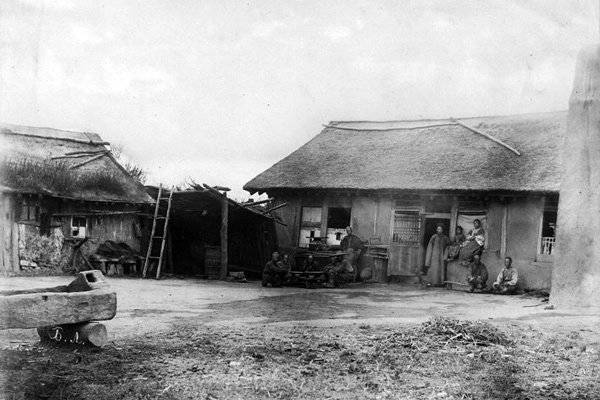
In one of the recent studies on the Khonghuz expansion, a figurative picture of the absolute softness of the 19th century Russian administration in Primorye is given: “Russian soldiers were more accustomed to the shovel and ax than to the bayonet and rifle. Other "miracle heroes" over the years did not happen to see weapon even on guard. Gentlemen officers are used to seeing themselves as managers of government work rather than combat commanders. In the rare moments of leisure, the thoughts of the chiefs were filled with sweet dreams of a retirement coming and leaving the hateful Pacific wilderness. Energetic and quick action did not have to wait ... "
Governor General of Eastern Siberia M.S. Korsakov, and after him the less significant officials of the administration, with genuinely earnest obsession began to seek unconditional execution of some provisions of the Beijing 1860 Treaty of the Year, which restricted the use of police measures to the Chinese population of Primorye.
Indeed, a number of articles were recorded in the Beijing Treaty that enforced the laws of the Qing Empire in relation, I stress, to the settled Chinese population of Primorye, which in the Ussuri region hardly exceeded one or two thousand people. The Russian administrators, striving at all costs not to cause "inclinations of insurrection and distemper of the subjects of the Qing state," began to interpret these articles of the Beijing Treaty in the sense of the complete lack of jurisdiction of ethnic Chinese to Russian justice. An unprecedented case, probably in world history!
"Manzovskaya war": the first Chinese lesson in the Russian Primorye
At the end of 1867, the entire Russian-Chinese border in Primorye suddenly flashed. However, the word "surprise" is appropriate to apply only in relation to the "Rotosean state" of the Russian authorities in the province, while the Chinese have been preparing this "surprise" for a long time and carefully.
Literally on one December night, the completely peaceful situation in Primorye rapidly changed to the opposite. All Russian villages in the valley of the Suchan River were looted and burned. The attacks on Russian villages and Cossack villages in the region continued throughout the winter, and on 26 on April 1868, the Hunhuza seized and burned the Russian military post in Strelok Bay. Within a few days, the Chinese to the ground burned down the Russian village of Shkotovo, and two peasant families who did not manage to escape, were massacred. Then followed the punitive raid of the Hunghuzs along the Mongugai river valley, which flows into the Ussuri from the Russian bank. All Korean and few Russian villages along Monguguy were burned, the terrorized sedentary population fled. At the same time, the Chinese "manzas" attacked the Russian military post on Askold Island in Peter the Great Bay. The proximity of the military garrison of Vladivostok, located just some 50 km north of Askold, did not bother them at all. The impression was that both the Hunghuza and the Manzi acted synchronously, according to a previously agreed plan.
Only thanks to the energetic actions of Lieutenant Colonel Yakov Dyachenko, the commander of the Ussurian battalion of the Amur Cossack army, the offensive of the Hunhuz on the front, accompanied by armed insurrections of the "manz" in the rear, was able to be stopped after four months.
In the initiative actions against the Chinese, Lieutenant Colonel Dyachenko was greatly helped by an unknown volunteer Gustav (according to other data Friedrich) Laube, who was considered a subject of the French crown, and in fact was, apparently, a Bavarian German. Having created a mobile detachment from the Ussuri Cossacks, Gustav Laube very energetically undertook to smash the Hunhuzs, without stopping, on occasion, with preventive punitive measures against the Chinese Hunts supporting Hunhuzes.
As a result, an enterprising German who saved hundreds of lives of Russian settlers was accused by Russian major V.D. Merkazin, personal adjutant of the “legitor” governor-general MS Korsakov, “in a malicious violation of the laws of the Russian empire, arbitrariness and banditry.” Proud Laube, who does not want to endure the abuse of manz, was arrested and put into jail. By special order of MS The German Korsakov should have been tried by a military court, whose decisions would hardly have been humane. Laube was saved by the personal advocacy of the commander of the Ussurian Cossacks, Yakov Dyachenko, and also the chief of staff of the troops of the Primorye Region, Mikhail Tikhmenev, who is very authoritative in St. Petersburg military circles. The Germans were released from prison, and the investigation showed “utter partiality in the case,” Major V.D. Merkazin.
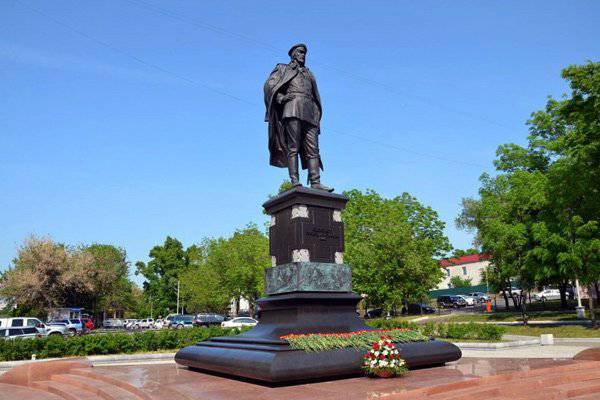
As a result, the situation came to the administrative status quo: the German Laube, having crossed over a hundred times, left Russia, Major Merkazin departed for Irkutsk in the retinue of the Governor General, and Cossack Jacob Dyachenko was forced to appoint Manzu Li Gui to comply with the laws of the Qing Empire in relation to others "Manz" on Russian territory. The genuinely humanistic articles of the Beijing Treaty and the traditional for Russia administrative insanity triumphed!
"Redbearing" does not save from the impact of Cossack lava
A vivid example of the omnipotence of the Chinese community in the Ussuri region was the attack of the Hunhuz in June 1879 on the farm of a German skipper, a Russian citizen of Friedolf Heck, located in direct sight of Vladivostok, on the other side of the narrow Amur Bay. The Hunghuzy was stolen (and probably later killed) by the seven-year-old son of the skipper. They raped and hung up, with their hands tied behind their backs, the Russian wife of Huck, killed all his servants and workers.
In April, 1882, an equally savagely brutal attack, was completely a hunghuz on the farm of another German colonist, K.A. Cooper, in the Gulf Plastun. The Chinese burned down the colonist's house, killed Cooper’s two sons, Eugene and Joseph, killed all the farm workers, stole all the livestock, and looted property on 23 thousands of rubles.
As in the case of the tragedy of F. Huck, the Russian state machine, which is no longer interested in finding the culprits, but in order not to arouse the mass discontent of the Chinese, was slowly leading investigative actions. As a result, of the seven local "manz" —unhuzi gunners — they managed to arrest only one Chinese, since all the other accomplices had already managed to safely move to China. However, this manza, a certain Wang Jicheng, ultimately managed to avoid Russian justice, because he managed to escape from prison by digging up. The surrounding Chinese population, reliably protected by the Beijing Treaty, of course, did not betray the hated mi-hou of its fellow man.
In conditions when the Russian state fanatically observed the letter of the treaty with the Qing empire, the Ussuri Cossacks began to deal with the dominance of the Chinese "manz" without prior arrangement. Stanitsa atamans began to less and less inform the official state bodies about their raids against the Hunhuzs and to more and more actively “tame” those local “manz” who were convicted of links with the gangster bandits. This "Cossack ethnic policy" gradually began to bear its positive results: already in 1863, i.e. just five years after the first appearance of the Cossacks in the region, on the banks of the Ussuri and its tributaries, 29 new Cossack villages were founded.
It is necessary to recognize the surprising fact that in cases where the Cossacks at least a little “went too far” against the Chinese accomplices of the Hunghusians, angry shouts and harsh measures against the Slavs were initiated not by the Qing empire, but exclusively by domestic administrative “law-makers” .
So, in 1879, the Ministry of Foreign Affairs of Russia, without receiving any official note from China, began to apologize to the Chinese government for the actions of the centurion of the Ussuri Cossack hundreds, Matvey Nozhin, in a very hasty and even humiliating style. The Cossacks-Ussurians, pursuing the Hunghuz, crossed the border of Manchuria and slightly patted the Chinese border detachment, taking the latter as the next Honghuz formation. The case is, in principle, insignificant, common for the Russian-Chinese border of that time, and therefore, logically, it should be limited to the reply of the Governor-General of Eastern Siberia, but no, we decided to make a persistent excuse at the highest level.
In cases where the Cossacks could not hide the consequences of their preventive attacks against the Chinese Hunhuz accomplices, repression against them by the domestic state machine followed immediately and were extremely punishing. For example, in October 1881, two Russian Cossacks were arrested by Russian policemen who were accused of killing five Chinese manz. More than a year, the investigation went on, and although it was found out during the course of time that the murdered "manzes" were constant gunners of the Hunghusians from Manchuria, the unfortunate Cossacks were still shot, and the Cossack officer who commanded them was still under investigation for a long time.
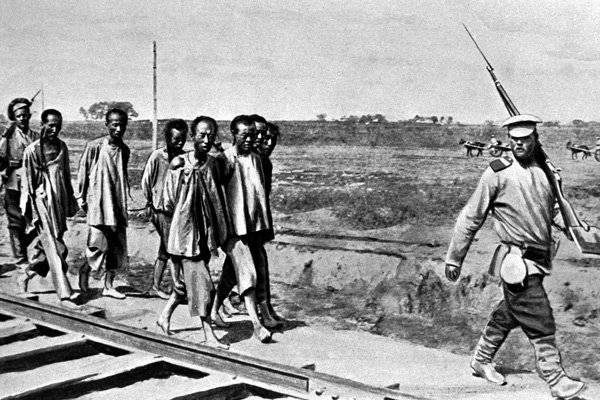
Grieving about the “sometimes illegal and always self-righteous actions” of the Ussuri Cossacks, the Russian regional authorities at every opportunity beat the Cossacks on their hands, naively hoping that it would be possible to maintain a “peaceful and sinless life” in Primorye with such a strange method.
In order to avoid unnecessary military initiatives of the Cossacks, on July 14 of the year 1889, a decision was made on the direct submission of the Ussurian Cossack Army (VHF) to the Governor of the Maritime Region. The artificial position of ataman VHF, to which St. Petersburg always appointed a person of deliberately non-Kazak origin, seemed insufficient to ensure genuine loyalty to the Cossacks. At the same time, a decision was made by the Governor-General, which forbade the Cossacks to independently pursue the Hunhuzes attacking the stanitsa. According to the royal administrators, the Cossacks had the right to give armed resistance to the attackers. However, after that, they had to inform the nearby state authorities about the incident and only then, having received from the last specially assigned officer, to begin the prosecution of the Hunhuzes.
Of course, the Cossacks lacked reason without prior order not to execute such tactically illiterate decisions. Here is one of the clearest examples of what the Cossacks did in fact.
In the late autumn of 1915, the Cossacks of the village of Poltava confiscated a large wagon train on the border with China, in which the Manza attempted to bring weapons for the Hunhuz. The next day, the constable Vasily Sheremetyev, who served as the stanitsa stanitsa, received credible information from his informants about the impending attack by the Hunhus on the village in order to recapture the captured "good".
Without any notification of the official Russian institutions, the ataman gave the order to organize a mass fest in Poltava in order to show the surrounding "manzam" - "Yak Cossacks, having drunk good vodka, sleep all at once."
On the night of the Hunghuza, believing in the information about the Cossack drunken sleep, they actually began to be dragged into the streets of Poltavskaya. When their advanced brigades reached the main Maidan of the village, the Hunhuz fell under concentrated gunfire of Cossack ambushes that had been previously placed. The battle lasted only half an hour, but during this time more than a hundred Hunhuz were killed.
With the dawn, the constable Sheremetyev, without waiting, of course, the army officer, began the persecution of the retreating Hunhuz. However, the latter could not go far, because the Cossacks of the neighboring Nikolo-Lviv stanitsa under the command of Ataman Alexei Efteev hit them in the way. The converging blow of the two Cossack lavas turned out to be terrible: about two hundred more hunhuzs were chopped up and captured over fifty "red-bearded". The Cossacks lost only one person, but what a thing! Rescuing a young Cossack, a constable Efteyev received a grievous wound. The Cossacks of the Nikolo-Lviv village could not bring their chieftain alive to the Russian hospital in Grodekovo.
Inconsistent, ideologically contradictory ethno-political methods of the Russian Empire in Primorye, despite the sometimes great successes of the Cossack ethnic rebuff to the hunkhus, could not give a stable basis for eliminating the Hunghus threat once and for all. Until 1917, the bloody violence of the Hunhuz remained a terrible reality of the Ussuri region, and the very word “hunkhuz” sounded like a curse on the lips of the local Slavic population. The problem of the hunghuz, as well as the problem of criminal assistance to them by the local Chinese "manz", was successfully solved in another, Soviet era. True, this same totalitarian era has put an end to the original ethnic status of the Cossack people in Primorye.
Information